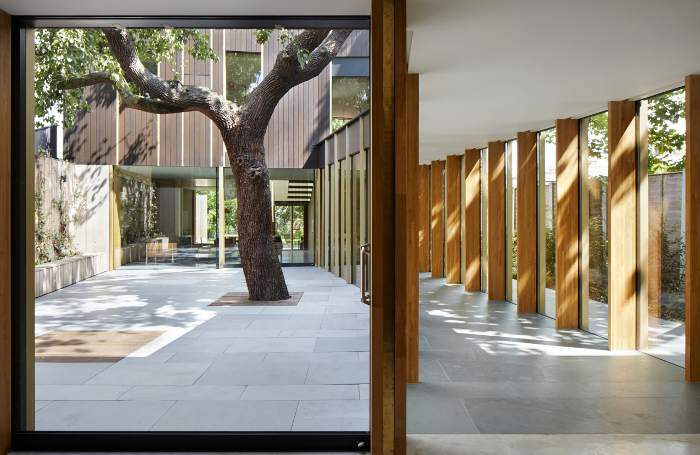Finding low or zero toxicity products and materials to use in a building is a tough challenge. However, a great deal can be achieved through relatively simple strategies and interventions.
Jake Edgley, the Practice Director of five-strong Edgley Design, began a search for applicable, low-tech strategies that his practice could adopt for new low-toxicity domestic buildings while building his own house in south London.
“If you know what you are doing, low-toxicity specification can make little difference to the cost of a new house,” he suggests. “Zero VOC paint, for instance, is more expensive, but the labour costs are the same. Overall the difference in cost is very small.”
He admits that you cannot produce an entirely toxin-free environment, but can only take steps to reduce toxicity levels as far as is practicable. He has found there are low-toxicity alternatives for most products and he continues to look for new ones to fill the gaps – a wood filler that actually works continues to elude him.
Glued timber products such as plywood and MDF can be found in low-toxicity forms, zinc can substitute for lead flashing, low-toxicity paints and varnishes are available from specialist companies such as Lakeland, linseed oil-based flooring such as Linoleum is a natural alternative.
When in doubt, he advises using the most basic of tools available to us: trusting your nose. Toxic materials generally stink.
Where there is no suitable material available, a design workaround can be employed. On his own house, dubious adhesive fixing for a specified glass balustrade was abandoned and glue-free DIY holes and mechanical fixings served instead.
Edgley learned a great deal through research, practice and trial and error. He found Howard Liddell’s Eco-minimalism: the antidote to eco-bling invaluable. A slim volume on ecologically benign building design, it advocates low-tech principles and sets great store on airtightness.
We are all aware, to greater or lesser degrees, that air pollution in our towns and cities is a problem. Gas boilers in buildings are responsible for 21% of nitrogen oxide emissions across London, rising to 38% in the centre.

Edgley will now always push clients towards heat pumps for domestic heating. If the government’s Future Homes Standard becomes a reality, these may replace gas boilers from 2025 in new homes, although Edgley acknowledges that they are currently a relatively expensive option.
He also regards mechanical ventilation with heat recovery (MVHR), which provides fresh filtered air, as a must for healthy internal air quality. For him, it is the single most important choice in designing a new low-toxicity home. Low-energy homes with good airtightness are unpleasant without them, he believes.
That MVHR incorporates dust filters is often overlooked. They can greatly improve the quality of internal air, which is typically changed twice in an hour. Activated carbon filters are now available from some suppliers, and these can also filter out particulates and toxins such as PM2.5 and nitrogen oxide, both of which are cited as health hazards in cities.
Ensuring that the polluted air outside of your house stays outside is the first principle. Edgley points out that a plywood and timber-frame house can achieve high levels of air tightness as long as the contractor takes proper care of the vapour barrier. His experience is that designs can perform very well without special airtightness details if the membrane is not damaged and floor and ceiling joints are sealed.
One simple intervention in terms of air quality is the effectiveness of physical screening from road pollution, where the highest concentrations are very localised. Any physical barrier will help, but trees and hedges actively absorb toxins. A screen provided by a silver birch tree, for example, can reduce air pollution levels by as much as 50%.
As concerns grow about air quality in our cities, the idea that a new home can be an oasis of almost zero toxicity can only become more attractive.
Thanks to Jake Edgley, Edgley Design.
Text by Neal Morris. This is a Professional Feature edited by the RIBA Practice team. Send us your feedback and ideas
RIBA Core Curriculum Topic: Business, clients and services.
As part of the flexible RIBA CPD programme, Professional Features count as microlearning. See further information on the updated RIBA CPD Core Curriculum and on fulfilling your CPD requirements as an RIBA Chartered Member.









